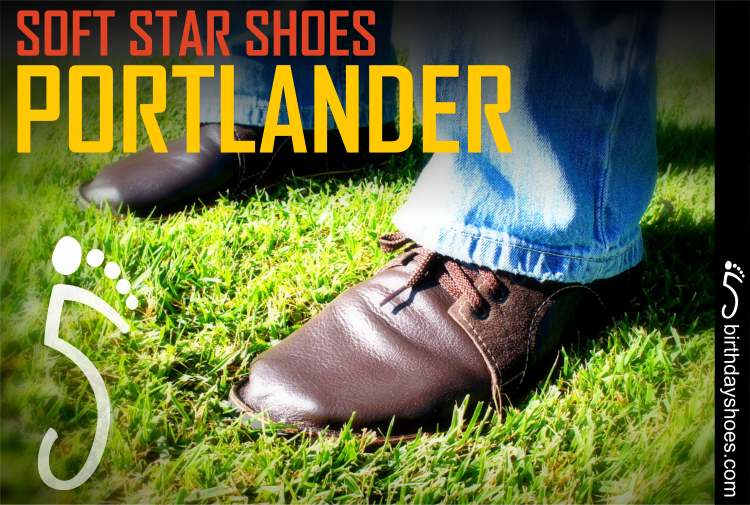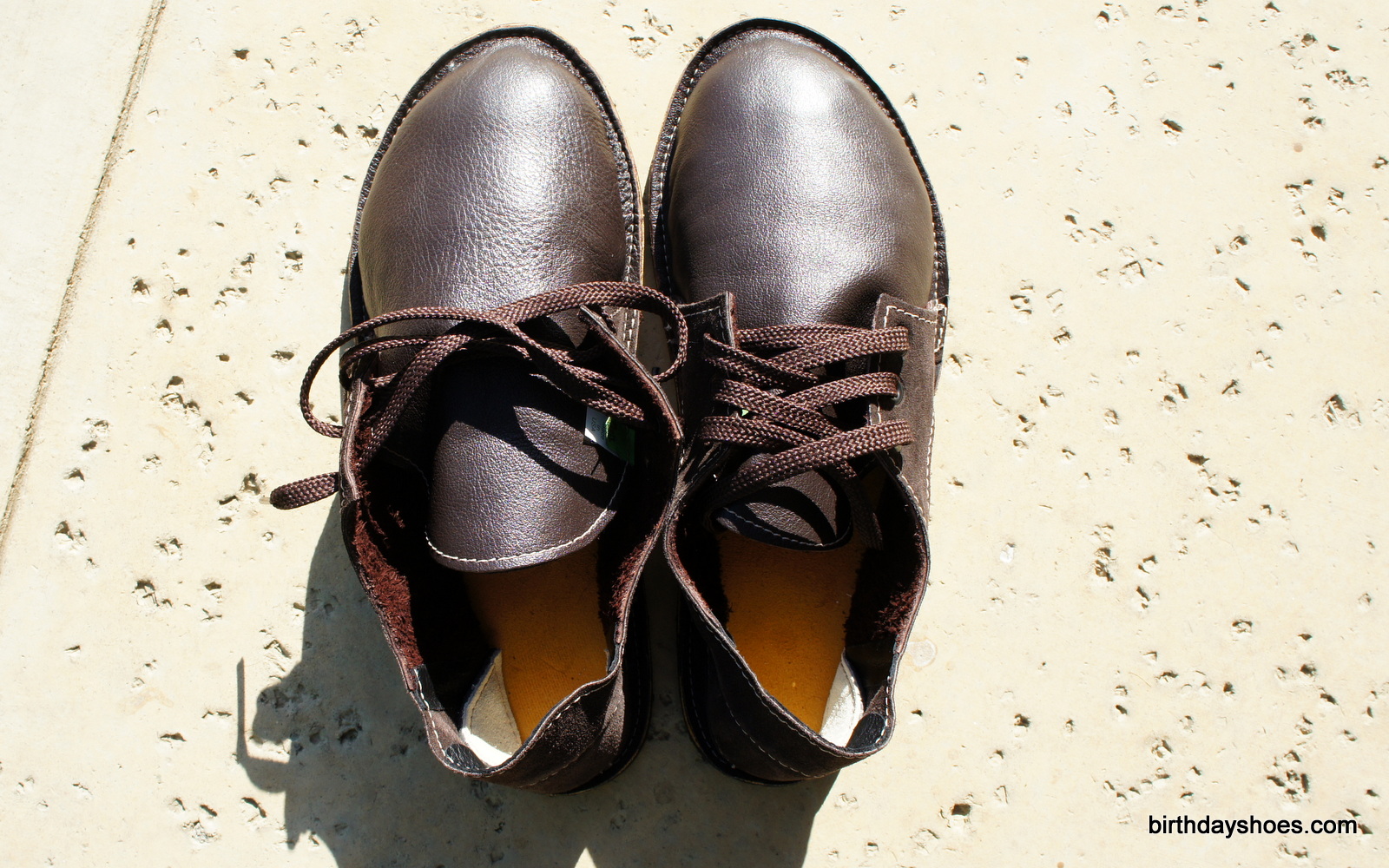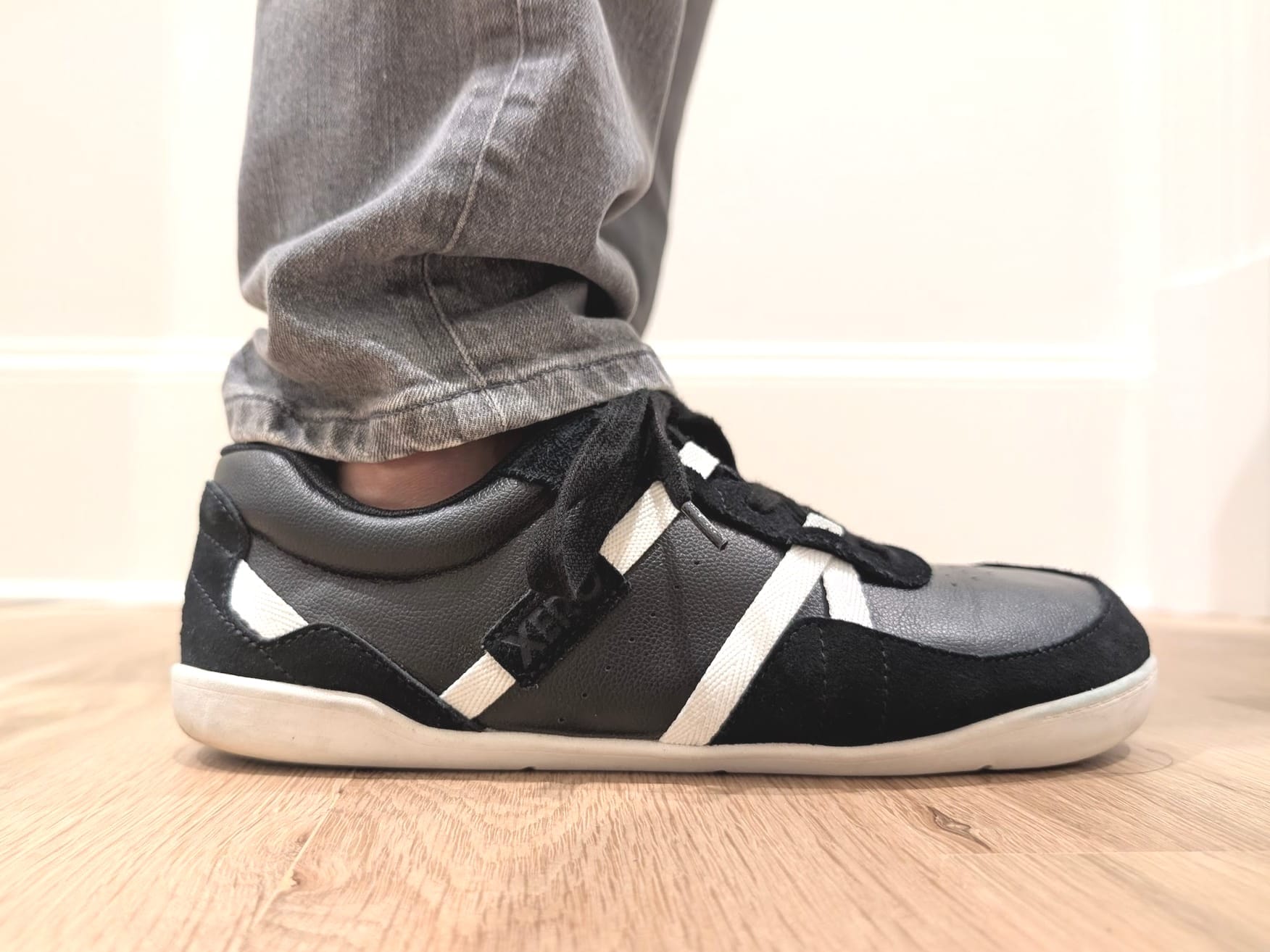Soft Star Portlander Review
The Portlander is a newer design from Soft Star, which is based on their popular Dash RunAmoc style. The Portlander features the same upper style, but the major and most obvious change is the way the upper is attached to the sole. The shoe uses a…

The Soft Star Portlander is a newer design from Soft Star Shoes, which is based on their popular Dash RunAmoc style (Jarvis recently reviewed the RunAmoc Dash here). The Portlander features the same upper style, but the major and most obvious change is the way the upper is attached to the sole. The shoe uses a stitch-down technique to create a lip around the edge of the sole. That simple change complements the look of the Dash with a bit more casual style.
With an entirely different sole, the Portlander adds a familiar but distinct feel and style to the Soft Star lineup and has quickly become one of my favorite shoes. Read on for my full review!
Meet the Portlander

Soft Star sent me the Portlander shoes to test earlier this summer, so I’ve really been able to get a sense of how they hold up to months of everyday use. This is my first chance to try out the Soft Star brand, and I am really impressed with the quality of design and construction. The entire upper is made of premium leather pieces. The Portlander has a “two-toned” style using smooth leather over the forefoot with a suede leather saddle and heel. The leather over the toes is relatively thin and does give a bit with time to expand an already roomy toe box. The shoes feature white contrast stitching which I think really adds to the overall look of the shoe.
The inside of the shoe has a natural suede insole. On the inside at the heel, there is a little stitched leather pad which provides some structure. The added thickness might also help with durability of the leather and protection of the heel. This little pad was actually the only problem I had with the shoes (emphasis on had). The pad is not connected to the sole and is stitched directly to the leather wall of the heel. Because it is elevated from the sole, I could feel the bottom corners/edges under each side of my heel for the first several days of wear. Eventually, the feeling went away and I haven’t given it a thought since.

There is very little “structure” to the shoe and they are completely collapsible, but they don’t collapse like a pile of cloth when you take them off. The forefoot/tongue piece will collapse without your foot in the shoe, but the walls/heel are structured and stitched in a way that they stand up nicely. Also, the overall weight of the shoe is pretty light at around 6.5 oz. Combined with the thin and flexible leather upper, if I pick my foot up, I almost forget that I have a shoe on. The way the sole and upper materials mold around my foot is awesome.
The Sole
The first thing I noticed when trying on the shoe was the feel of the sole. The Portlander uses what Soft Star calls the Geo sole (likely named for its geometric tread shapes). It is a 6mm Vibram rubber compound designed to be 40% lighter than other Vibram soling material, while providing additional traction and retaining high abrasion resistance (we’ll come back to this one). The sole is definitely not a hard rubber and is extremely lightweight and flexible, especially considering its thickness.

The soles initially felt “squishy” but in a very good way. I couldn’t help but keep curling my toes down to feel the give in the sole, and there was the slightest compression to them with each step that I really enjoyed. Months later, the soles aren’t as cushioning as they were initially, but the rubber compound still has a lot of give when squeezing it with my fingers. As already mentioned, the stitch-down style creates a small rim around the edge and the stitching of the upper actually runs through the sole. You can tell the sole is a bit softer, because it dimples in where the stitching runs. I really like this material a lot.

I learned that Soft Star was wanting to use the Geo sole in a casual shoe and that they also wanted to make a stitched sole version of the Dash. Thus was born the Portlander!
Sizing
Softstar recommends going up a size in the Portlander. For reference, I wear a Vibram 43 and Vivobarefoot 44. My feet are 10.75 in long, pretty flat, and semi-wide (4.5 in). The Portlander comes in narrow and wide options, but even with my semi-wide feet, the regular width has been fine. The initial pair of Portlanders I tried were a size 11, and they were just a little too short in the length for my preference. These were sent before they had their “size up” advisory, so while the leather was certain to stretch a little, I opted to go for the 12 (there are no half sizes). In the size 12, my toes are exactly one inch from the front stitching. This may seem like a lot of space, but the way the leather slopes into the stitch takes up some functional room (they recommend an index finger of space). Plus, I love the freedom of a roomier toebox.
Function
I definitely have my “go to” barefoot shoes (for work it’s been my Vivobarefoot Gobi and Ra), and I can usually tell from the moment I put a new shoe on whether or not they’ll work out. This time, the Soft Star Portlander quickly took over as my go to shoe and my testing never really ended. I wore them daily for the entire summer, and the primary reason I stopped wearing them was that I was forced to after the rainy winter weather hit. These are now in the rotation for my everyday shoe (weather permitting), and the one I pick generally comes down to what I’m wearing that day.
They aren’t as thin as some of my shoes, but at 6mm, they are by no means thick. Add to that the light weight and extremely flexible nature of the sole and these things are basically a slipper pretending to be casual shoe. In fact, the slipper like comfort of the Portlander is probably my favorite aspect of the shoe.
One potential downside for some might be that the Portlander also has a slipper-like look to them with the way the thin leather upper slopes gradually down into the toe of the shoe. They don’t have a structured “cap” shaped end like other shoes, and the leather has a bit of a loose look to it. This is because the shoes are made with a “non-lasted technique.” Because of the way the leather lays softly on your foot, sometimes you can also make out the outlines of individual toes. Personally I don’t mind, because it gives me the flatness, width, and overall toe volume freedom I expect from a barefoot minded shoe.

I’ve enjoyed the Portlander’s so much, my next shoe purchase might be the Dash. Again, the only differences are the type of sole material and the way the upper is attached to the sole. Whether you want the stitching to be seen is an aesthetic choice, but the resulting “rim” around the edge on the Portlander might have some benefits as well. One benefit of the rim beyond the “look” is that it helps with durability of the upper. The way the upper connects with the Dash sole, and shapes around the foot, creates a more fitted shoe (which is great for running). Depending on how you walk or run, the leather edges of the Dash could wear down since it connects right at the sole edge. The Portlander edge would likely prevent this, although it’s not necessarily meant for running. It has a more casual look and was designed to be a casual shoe. That said, I have occasionally jogged around in them and they felt good (did I mention I really like this sole material). The upper forms around your foot like a slipper, so I don’t see why you couldn’t run in them. My only worry with running would be the durability of the sole.
I’m generally not very hard on shoes, but I have worn these shoes daily for months and was curious how the softer nature of the soles would hold up. Part of my daily commute involved riding a push scooter, and all the pushing puts a lot of stress on the soles of my shoes. For the Portlanders, I’m actually impressed there is relatively little wear at the heel from walking. I can tell most of the wearing down was due to the scooter because I push a bit more with my left foot and the tread is worn down significantly more on the left sole. It’s also only worn at the forefoot which is where I contact the ground.

For this reason, I might hesitate to do too much running in the Portlander as this sole compound might not hold up to long-term heavy duty abrasion. It makes sense that this softer compound sole would wear down more quickly than my other firmer rubber soled shoes, but I also put a lot of stress on them every day for months. Worn as a casual everyday shoe, the sole should hold up well.
Conclusion
The Portlander shoes are exactly what I want in a barefoot shoe. They are flat and thin with just a bit of cushion. The toebox is wide, and the leather material is soft and allows free movement of my toes. As a bonus, they are made in the USA. Soft Star shoes are designed and handcrafted in Oregon using US-sourced materials.
At $97 (Available from SoftStar here), the Portlander shoes are on par with most other minimal shoes I own and they certainly seem like they’ll hold up to years of normal wear. I know I’ll continue to wear these and definitely recommend them.
If you're new to Soft Star shoes, take a spin around some of the other Soft Star reviews here on BirthdayShoes!




